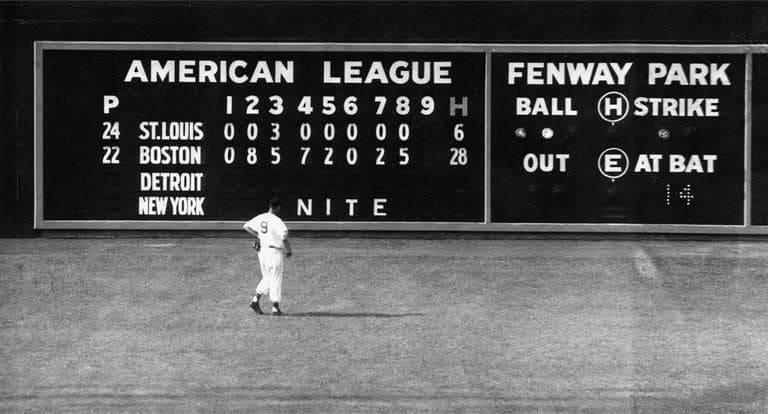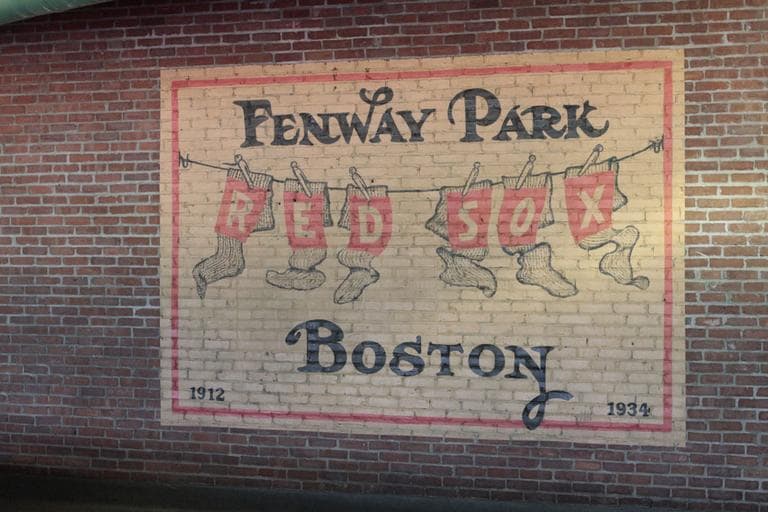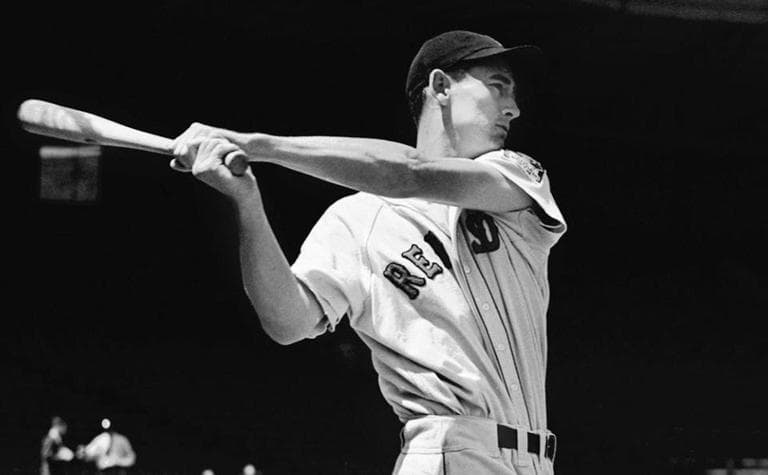Advertisement
From 'Tessie' To 'Sweet Caroline': A Brief History Of Fenway Park
Resume
Before there was a park, there was a song. The team wasn't called the Red Sox yet, but the Royal Rooters, the raucous fans of the Boston Americans, chose "Tessie," a popular tune of the early 1900s, to taunt their rivals while marching from McGreevy's Tavern to the Huntington Avenue Grounds.
Owner John Taylor, tired of playing in a rented park and eager to bring attention to land he was developing along the Fens, sold half of his team to finance the construction of Fenway Park.
The late Morris Berk was approaching his 100th birthday in 1997, when he told Only A Game's Bill Littlefield the story of how he snuck into Fenway Park before workers had even installed the sod:
No grass in the middle of February. So I walk out on the field, mud and all, and I said, "This is about where the pitcher would stand. Skinny, you go there, you be the catcher." I threw an imaginary ball. And he threw it back and I claim to be the first pitcher at Fenway Park.
Fenway Park's official first pitch was thrown out by Mayor John "Honey Fitz" Fitzgerald, grandfather to JFK and great grandfather to "Sweet Caroline," but we're getting ahead of ourselves.

The Sox won the 1912 World Series at Fenway, but the park was deemed too small to host the team's 1915 and 1916 championships.
But, Fenway was more than big enough for the 1918 World Series. With the country at war, and an influenza epidemic raging, even Berk didn't make it down to the park.
"No, I wouldn’t have been very interested," Berk said. "I had just graduated MIT and I was trying to get a job to avoid the draft."
Ted Williams Makes His Fenway Debut
Ted Williams debuted at Fenway in 1939 and soon caught the attention of a young Norman Dvorkas.
"I was a member of the Knot Hole gang of the Boston Braves," Dvorkas said.
But Dvorkas' devotion to his Braves, who played at what's now Boston University's Nickerson Field, ended after one journey just a mile-and-a-half down the street.
"I went to see this big shot player from the Red Sox, saved my money, went through the turnstile to unreserved seats in right field," Dvorkas said. "I never went to another Braves game."
Fenway hosted the All Star Game in 1946 and lost to the St. Louis Cardinals that same year in Game 7 of the World Series.
At his last at bat on Sept. 28, 1960, Williams hit a home run and when he left the game, so did many fans. Just four years later, on Oct. 1, 1964, with the team in the gutter, only 306 of Fenway's faithful showed up to watch the Red Sox beat the Indians 4-2. It was the lowest attended Red Sox game in Fenway's history.
Eight days later, the Boston Patriots took on the Chargers in front of more than 33,000 fans at their home stadium, Fenway Park.
1967: 'The Impossible Dream'
Some say "The Impossible Dream" season of 1967 saved Fenway. Before Lonborg, Yaz, Tony C. and the rest came within one game of a World Series title, there had been a push to tear it down.
On July 20, 1969, Sandy Sorel was attending her first Red Sox game when Apollo 11 landed on the moon.
"The announcer stopped the game and they showed it on the big screen, which in those days was totally black and white," Sorel remembered. "And the crowd just went hush."
The Red Sox went to the World Series again in 1975, and lost in Game 7. In 1986, there was another trip to the series, another seven games and another heartbreaking loss.

Ladies and gentlemen, please welcome the greatest hitter that ever lived.
When Ted Williams threw out the first pitch for the 1999 All Star Game, it felt like Fenway's swan song. Just two months earlier, Red Sox CEO John Harrington had declared that "it would be easier to straighten the Leaning Tower of Pisa" than to fix Fenway Park.
Current Sox President and CEO Larry Lucchino said he and fellow owners, John Henry and Tom Werner, had other plans.
"It’s a beautiful place. It has a historical feel. History sort of oozes from its pores," Lucchino said.
Over the next decade, the new owners pumped more than $275 million into renovating Fenway Park. World Series wins in 2004 and 2007 silenced all whispers about the team being cursed, and the Sox have sold every seat at every game since May 15, 2003.
'Sweet Caroline'
New traditions have come to Fenway, too. When Dr. Charles Steinberg came on board with the new owners, he wondered what would happen if the team started playing "Sweet Caroline" at every game, instead of just when the Sox were winning.
"Well, you would have thought I was looking to paint the Green Monster pink, it was a scary notion," Steinberg said.
Soon, Steinberg said, the Sox found that the song could turn losing games into winners.
"It harkens back to 'Tessie' in 1903, 1912, 1915, 1916, 1918, that the singing of the song was a contributor to the atmosphere that the players acknowledged gave them an advantage," Steinberg said.
Years later, Neil Diamond confirmed that "Sweet Caroline" was written for Caroline Kennedy, great granddaughter of Honey Fitz, the mayor who threw out Fenway Park's official first pitch on April 20, 1912.
